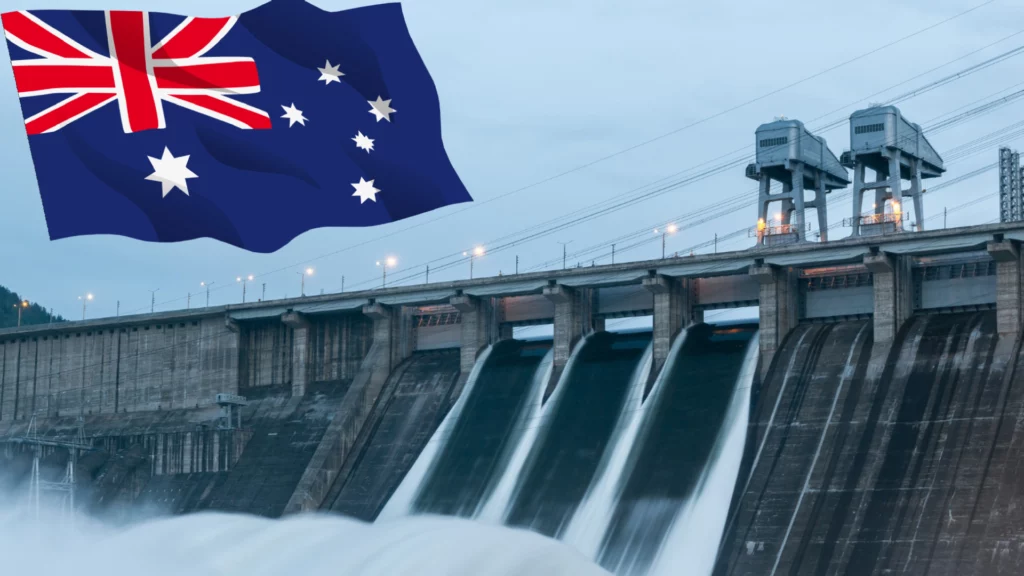Hydro energy, often referred to as hydropower, is a renewable energy source that has been harnessed for centuries to generate electricity.
In Australia, with its vast landscapes and abundant water resources, Hydro Energy in Australia represents a promising and sustainable solution for meeting the nation's growing energy needs while reducing carbon emissions.
In this guide, we will delve into the world of hydro energy in Australia, exploring its history, current status, potential for growth, environmental impact, and the key players driving this renewable energy revolution.
Historical Background of Hydro Energy in Australia
Hydro Energy in Australia's journey began in the late 19th century with the construction of the Fitzroy Falls Hydroelectric Scheme in New South Wales. Over the years, numerous small-scale hydroelectric power stations were built, primarily to serve isolated rural communities.
However, it wasn't until the mid-20th century that larger hydro projects, such as the Snowy Mountains Scheme, marked a significant turning point in the nation's energy landscape.
One of the notable features of Hydro Energy in Australia sector is its seasonality. Hydroelectric power generation is heavily dependent on rainfall and water availability, which can lead to fluctuations in output.
Nevertheless, hydro energy remains a crucial part of Australia's energy mix, providing grid stability and acting as a reliable backup during peak demand periods.
The Potential of Hydro Energy in Australia
Australia boasts abundant water resources, which makes it well-suited for the expansion of hydro energy generation. Several regions across the country hold untapped potential for hydroelectric development. These include:
- Tasmania
Tasmania, known as the “Battery of the Nation,” has impressive hydro energy infrastructure. It plans to expand this with the Battery of the Nation project to provide renewable energy to the mainland.
- Snowy Mountains Region
The Snowy Mountains in New South Wales has the famous Snowy Hydro Scheme, a large hydroelectric project. Expansion plans like Snowy 2.0 will boost energy storage and generation.
- Northern Australia
Northern Australia, with its monsoonal climate and abundant rivers, offers great potential for run-of-river hydro schemes. These projects could provide clean energy to remote communities and reduce their reliance on fossil fuels.
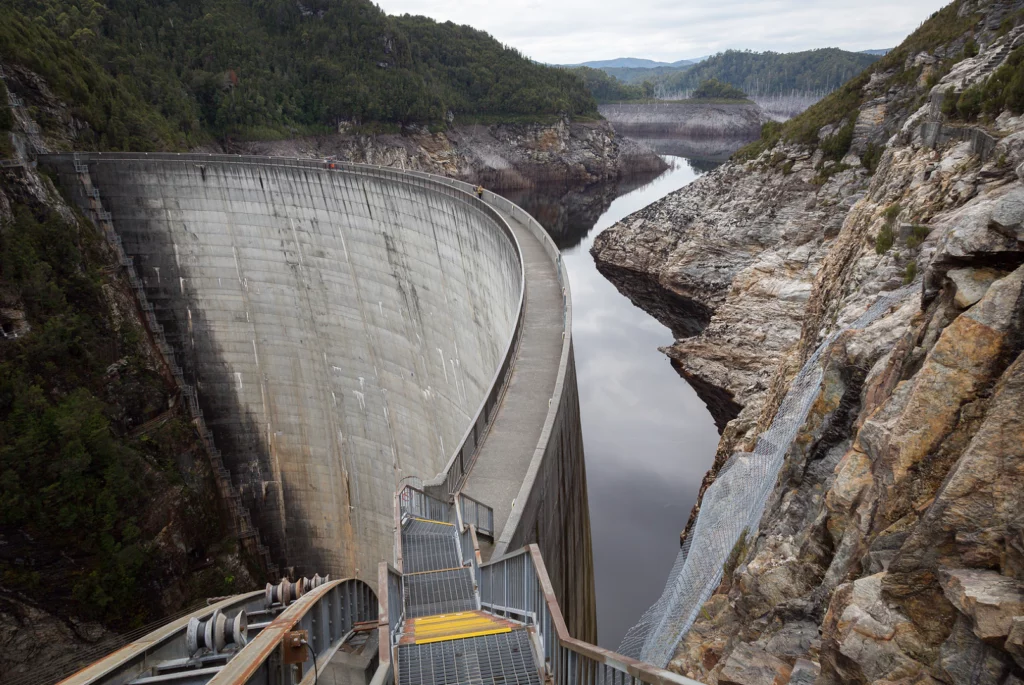
Environmental Impact and Sustainability
- Reduced Greenhouse Gas Emissions: Hydro energy is a sustainable choice due to its low greenhouse gas emissions during operation, offering a cleaner alternative to fossil fuels.
- Water Resource Management: Hydroelectric power stations contribute to effective water resource management, facilitating irrigation, flood control, and drought relief.
- Ecological Disruption: The construction of dams and reservoirs for hydro energy can significantly disrupt local ecosystems and aquatic habitats, necessitating careful planning and implementation of mitigation measures.
- Impact on Cultural Heritage: Hydro projects may affect areas of cultural significance, particularly indigenous lands and heritage sites, underscoring the need for comprehensive consultation and respect for indigenous rights in Australia.
- Renewable Energy Source: Hydroelectric power is a renewable energy source, as it relies on the natural water cycle, making it a sustainable option in the long term.
- Emission of Greenhouse Gases During Construction: While operational emissions are low, the construction phase of hydroelectric projects can produce significant greenhouse gases.
- Sedimentation and Water Quality: The creation of reservoirs can lead to sedimentation, affecting water quality and aquatic life, requiring ongoing management and monitoring.
- Landscape Alteration: Large-scale hydro projects can lead to significant alteration of landscapes, including submergence of land and changes in local geography.
- Potential for Energy Storage: Hydroelectric power stations, particularly pumped storage facilities, offer the potential for energy storage, providing a buffer for renewable energy variability.
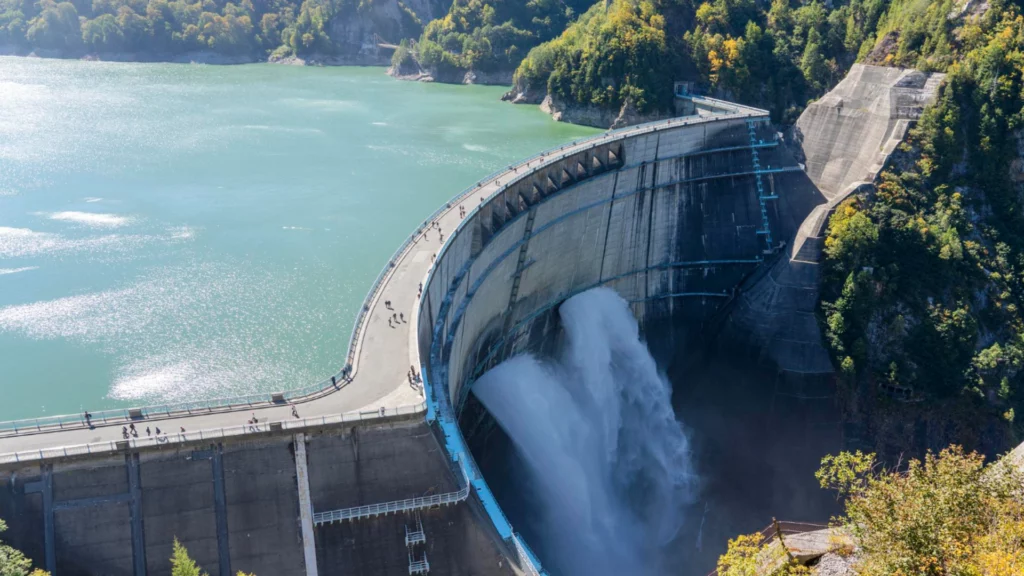
Key Hydro Energy Projects in Australia
Australia is home to several prominent hydro energy projects that showcase the country's commitment to renewable energy. Some of these projects include:
Snowy 2.0
Snowy 2.0 is a game-changing project that aims to expand the Snowy Mountains Scheme's capacity. It involves the construction of a pumped hydro storage facility to store excess energy during periods of low demand and release it during peak times, ensuring a stable power supply.
The Gordon Dam
Located in Tasmania, the Gordon Dam is one of the tallest double-curvature concrete dams in the world. Hydro energy generates significant hydroelectric power and is an engineering marvel.
Advantages of Hydro Energy in Australia
Hydro energy in Australia presents numerous advantages that make it a pivotal component of the nation's energy landscape. These benefits contribute to its growing popularity and potential for expansion.
- Environmental Sustainability
Hydro Energy in Australia is eco-friendly, aligning with the country's commitment to reducing its carbon footprint and combating climate change.
- Reliability and Grid Stability
Hydro Energy in Australia is highly reliable as a baseload power source. It ensures consistent electricity supply, grid stability, and energy security for Australians.
- Energy Storage Capability
Hydro Energy in Australia is great for energy storage, like Snowy 2.0. It stores excess energy when demand is low and releases it when demand is high, helping manage the energy grid and integrate renewable sources.
- Economic Benefits
Hydro Energy in Australia creates jobs and boosts the economy through infrastructure construction, maintenance, and related industry development, leading to significant economic growth.
- Water Resource Management
Australian hydroelectric power stations serve two purposes: managing water resources efficiently and producing electricity. They combat water scarcity and aid vital activities like irrigation and agriculture.
Government Initiatives and Policies
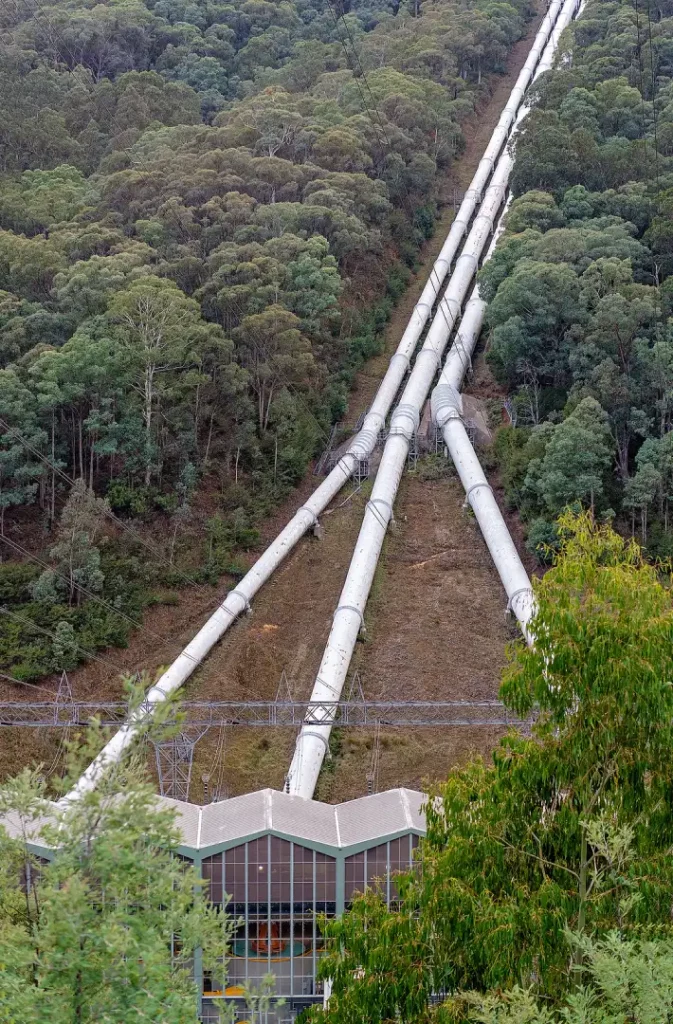
To promote hydro energy and transition to a low-carbon economy, the Australian government has implemented various initiatives and policies.
- Renewable Energy Target (RET): This key policy sets an ambitious goal to augment the proportion of renewable energy, including hydro energy in Australia's total electricity generation mix.
- Clean Energy Finance Corporation (CEFC): The CEFC plays a pivotal role by offering financial assistance and investment for renewable energy projects, with a special focus on hydroelectric power schemes.
- State-Level Initiatives: To complement federal efforts, various Australian states and territories have instituted their renewable energy targets and incentives specifically designed to encourage the development of hydro energy in Australia.
- Research and Development Funding: The government allocates funds for research and development in hydro energy technologies, aiming to improve efficiency, reduce costs, and enhance sustainability.
- Environmental and Regulatory Framework: A robust set of environmental guidelines and regulatory mechanisms ensure that hydro energy projects adhere to sustainability principles and have minimal ecological impact.
- Grid Integration Support: Initiatives to facilitate the integration of hydro energy into the national grid, addressing challenges such as variable energy production and storage.
Challenges and Innovations in Hydro Energy Technology
While hydro energy in Australia has immense potential, it also faces challenges that necessitate innovative solutions to maximize its benefits.
- Aging Infrastructure
Many of Australia's existing hydroelectric facilities have aging infrastructure that requires maintenance and modernization. Innovations in materials and engineering techniques are essential to extend the lifespan and improve the efficiency of these facilities.
- Environmental Mitigation
Addressing the environmental impact of hydro energy projects is an ongoing challenge. New technologies like fish-friendly turbines and eco-friendly reservoir management aim to minimize disruption to aquatic ecosystems and indigenous habitats.
- Energy Storage Solutions
To tackle hydro energy's seasonality and variability, new storage solutions like advanced batteries, compressed air storage, and improved hydro systems are being explored for better flexibility and reliability.
- Remote and Off-Grid Applications
Mini hydro turbines and run-of-river systems allow hydro energy to be used in remote areas. This benefits isolated communities and industries.
- Digitalization and Automation
Hydro energy operations are integrating digitalization and automation tech to optimize production and improve efficiency. These innovations boost competitiveness and sustainability.
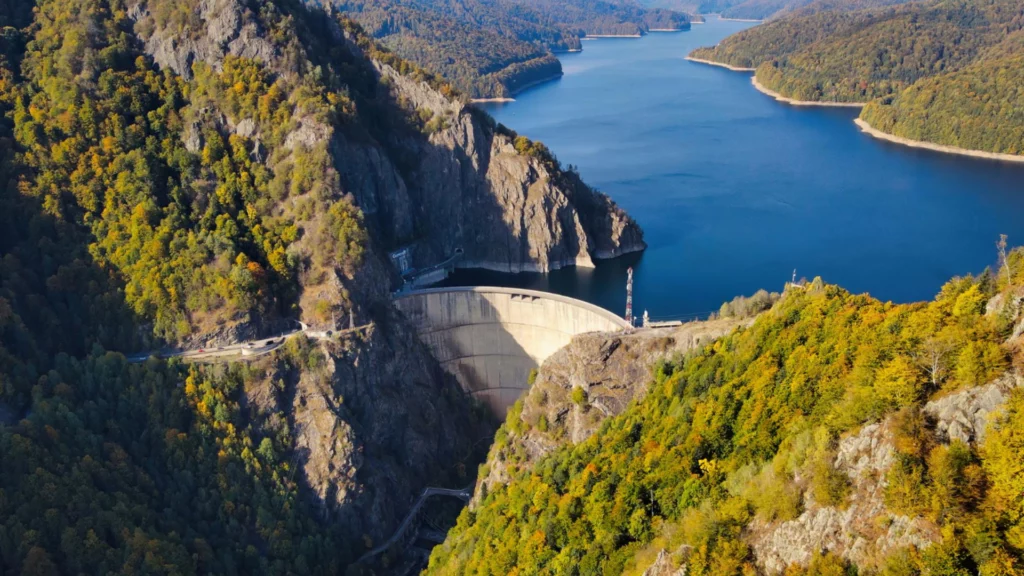
Community Engagement and Indigenous Participation
- Importance of Community and Indigenous Involvement in Hydro Energy Projects
Recognizing the essential role of local communities and indigenous peoples in the success and sustainability of hydro energy initiatives. - Social License to Operate in Hydro Energy Projects
The necessity of gaining social approval by actively engaging local communities, addressing their concerns, and involving them in decision-making to earn support for hydroelectric developments. - Indigenous Land Rights and Partnership in Hydro Energy
Addressing the intersection of hydro energy projects with indigenous lands and heritage sites in Australia, emphasizing the need for meaningful partnerships, respect for land rights, and integration of traditional indigenous knowledge in project planning. - Job Creation and Capacity Building Through Community Engagement
Leveraging local community engagement, particularly in remote areas, to create job opportunities and build capacity, including training programs and skill development initiatives, for community involvement in the hydro energy sector. - Environmental Education and Awareness in hydro energy Australia
The role of community engagement in environmental education, raising awareness of the pros and cons of hydro energy Australia projects, and encouraging community participation in monitoring and promoting responsible hydro energy Australia development.
Future Growth and Hydro Energy's Role in Australia's Energy Transition
The future of hydro energy in Australia, its role in the nation's energy transition, and its potential impact on achieving renewable energy goals.
- Expanding Hydro Capacity
Australia's commitment to renewable energy targets and emissions reductions necessitates the expansion of hydro energy Australia capacity. Upcoming projects, government support, and private investments are poised to drive substantial growth in the sector.
- Integration with Other Renewables
Hydro energy in Australia will increasingly complement other renewable energy sources like wind and solar. The flexibility of hydroelectric power stations makes them valuable partners in balancing intermittent renewable generation and ensuring a reliable energy supply.
- Grid Modernization
To fully harness the potential of hydro energy Australia's electricity grid will need modernization. Investments in smart grid technologies and infrastructure upgrades will facilitate the seamless integration of hydro energy Australia into the national grid.
- Exporting Clean Energy
Australia's surplus hydro energy Australia can be exported to neighboring countries, contributing to regional energy security and enhancing economic ties. International energy trade agreements and interconnection projects will play a pivotal role in this endeavor.
- A Sustainable Energy Future
As Australia continues its transition toward a sustainable energy future, hydroenergy will remain at the forefront of this transformation. Its reliability, environmental benefits, and potential for growth position it as a cornerstone of Australia's clean energy landscape.
Hydro Energy in Australia Conclusion
Hydro energy in Australia represents a valuable and sustainable resource that can contribute significantly to the nation's clean energy goals. With abundant water resources and ongoing investment in projects like Snowy 2.0, Australia is well-positioned to harness the power of hydroelectricity for a greener and more sustainable future.
As Australia continues to transition towards renewable energy sources, hydro energy Australia will play a pivotal role in reducing carbon emissions and ensuring a reliable power supply. By addressing environmental concerns, investing in infrastructure, and implementing supportive policies, Australia can maximize the potential of its hydro energy Australia resources.

